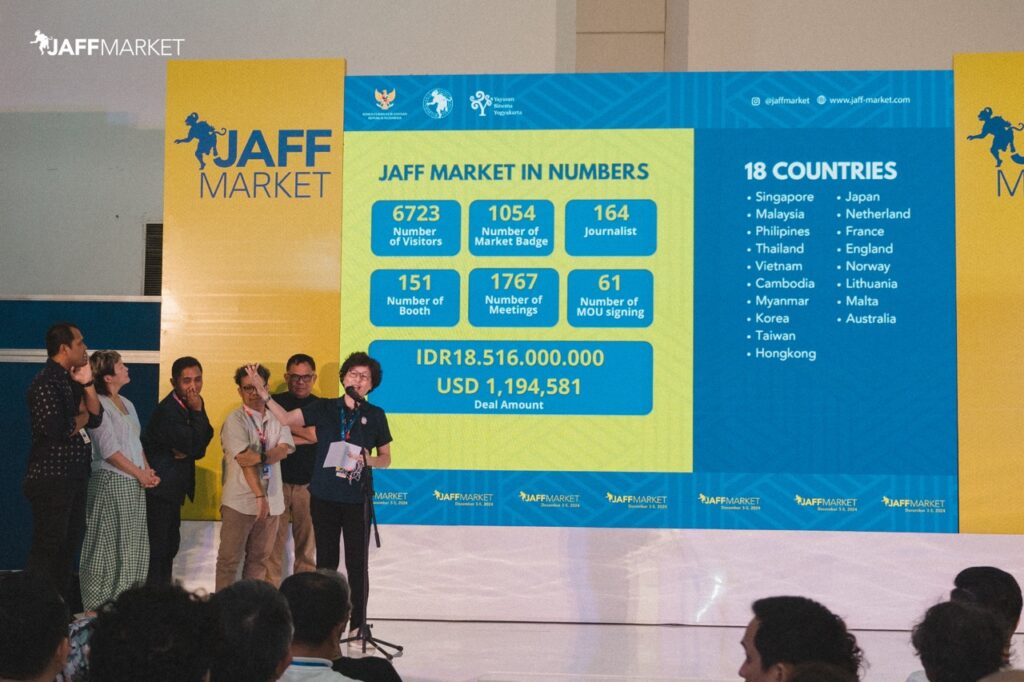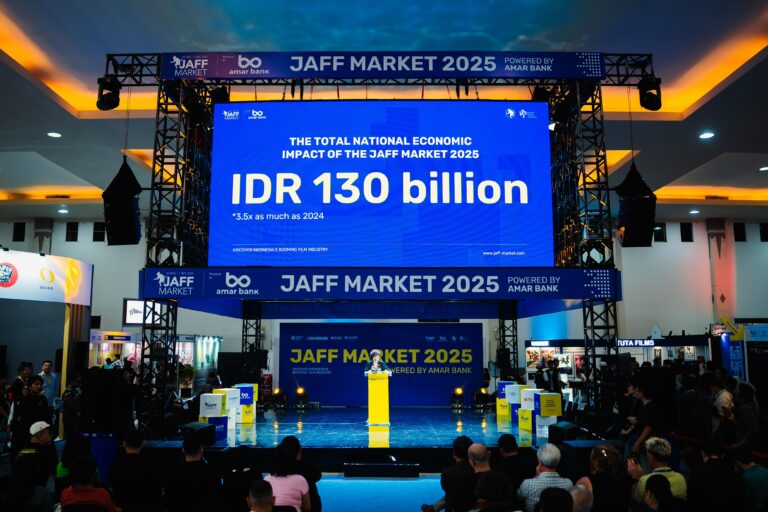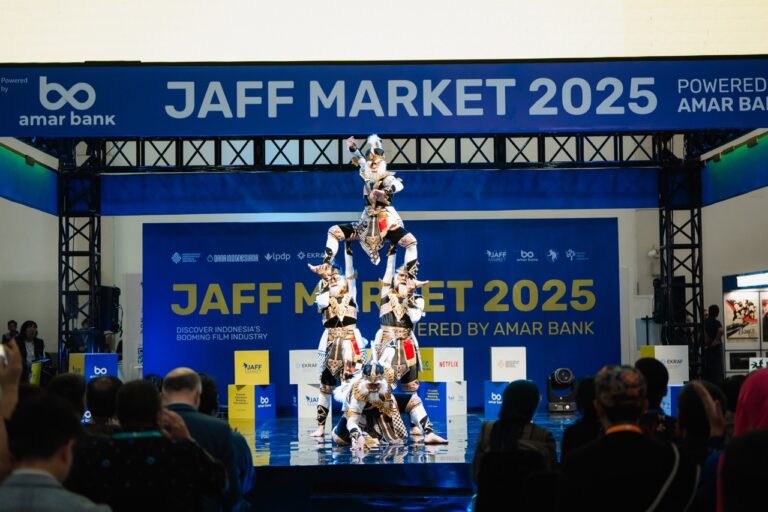What’s next for Indonesian film? JAFF Market has a plan
13
Oct 2025
When Indonesian movies captured two-thirds of the national box office last year, it marked a high point for an industry long in search of steady ground. Now, JAFF Market, the business arm of the Jogja-NETPAC Asian Film Festival (JAFF), is working to make sure the momentum doesn’t ebb.
As part of its mission, the initiative is collecting and analyzing data to push for evidence-based policy reforms, ranging from more even distribution of movie theaters to better accessibility to movies across the country.
“Without data, people will just follow the herd, producing many films without the appropriate quality,” FX Iwan, business strategist at JAFF Market, said in late September during a visit to the The Jakarta Post’s editorial offices in Central Jakarta.
“In the end, consumers will get bored and the industry will retreat again.”
Third cinematic age
Homegrown productions dominated domestic market at 65 percent of total ticket sales in 2024, or roughly 82 million admissions, according to data compiled by JAFF Market in collaboration with market research platform Cinepoint.
Iwan has dubbed this period the “third golden age” of Indonesian cinema, following the industry’s earlier booms in the 1970s and mid-2010s, both of which were followed by steep declines.
The first golden age ran from the 1970s to early 1980s, when a surge in stand-alone theaters across Jakarta and surrounding regions made moviegoing a staple pastime. But by the 1990s, the rise of television, VCDs and DVDs pulled audiences away, leading to the closure of many theaters. The 1997-1998 Asian financial crisis and rampant piracy deepened the slump.
The industry experienced a revival after restrictions on foreign investment were lifted in 2016. This brought new capital to cinema chains and fueled a sharp rebound by 2019, when theaters welcomed around 50 million moviegoers. Then came the pandemic in 2020 that halted the momentum once again, albeit for a few years rather than decades.
Iwan emphasized that the rebound that followed must be managed carefully.
“This time, we must ensure the cycle doesn’t repeat,” he said.
Local studios released 152 movies last year, and JAFF Market projects that number will grow to at least 200 annually by 2028. Meanwhile, it expects ticket sales to increase 10 percent each year, reaching around 100 million admissions by 2026.
But sustaining that growth will require one thing: more theaters.
More screens
The country has around 2,000 movie screens serving a population of over 280 million, one of the lowest ratios in Asia. The country’s top three operators, Cineplex 21 Group, CGV Cinemas and Cinepolis, operate two-thirds of their theaters on Java, leaving other regions vastly underserved.
“Theater locations are heavily concentrated on Java, while cities on Sumatra, in Kalimantan and Sulawesi remain underpenetrated,” Iwan said.
“That’s the next ‘homework’ for the industry: How to distribute films more evenly.”
He noted that regional audiences often rallied around stories reflecting their own culture. Rumpi Entertainment’s 2016 comedy Uang Panai’, for example, underperformed on Java but drew crowds in North Sulawesi, where people reportedly chartered buses to head to a theater.
“We need more screens to make such films accessible,” Iwan said.
Linda Gozali, market director of JAFF Market, said one solution could be to develop independent cinemas outside shopping malls, where tickets would be more affordable and movies more geographically and economically accessible.
“How do we nurture the habit of moviegoing so it becomes part of our culture, regardless of background?” Linda said.
She added that expanding the number of independent theaters in regions could also extend the theatrical window for local productions.
“Sometimes a film may not resonate in one area, but it could be a huge hit somewhere else,” she said. “Yet it’s often pulled from screens too early.”
More regional theaters could also translate into audience growth. Admissions per capita last year was 0.28, meaning around two-thirds of the population didn’t go to a movie theater. This was far below Malaysia’s rate of nearly 1 visit per person.
Data and dialogue
To better understand the factors behind this growth trend, JAFF Market will publish a complete report on movie industry during its second annual event, to be held from Nov. 29 to Dec. 1 this year in conjunction with the 20th JAFF at the Jogja Expo Center (JEC) in Yogyakarta.
The three-day gathering aims to bring together filmmakers, producers, investors and distributors to assess industry developments and explore new opportunities.
“If we don’t have proper data, how can we convince others that enthusiasm for Indonesian films is so high?” said JAFF Market business director Sekarini Seruni.
Last year’s inaugural edition drew nearly 7,000 visitors, which she described as “a celebration of the hard work of the film community”.
The programs at JAFF Market 2025 include the JAFF Future Project, Content Market, Market Screening, the Film & Market Conference and the Talent Day & Film Lab, all designed to connect creative ideas with business insights.
“We want JAFF Market to be a place where stories, data and opportunities meet,” she said.



